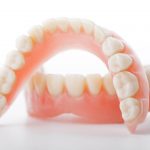Despite the quick development of dental services there are still some mutations that cannot be cured with any of the dental treatments. That is when oral surgery is inevitable. Oral surgery involves these treatments: tooth extraction, implantation, sinus closure, root apex resection.
When is tooth extraction necessary?
Tooth extraction may be necessary if:
- a plexus tooth has a chronic inflammation (i.e. upper tooth plexus may cause sinus infection)
- there is a massive dental caries on a broken tooth that cannot be cured or used for a prosthesis
- a tooth becomes instable or loose due to a parodontium disease
- a healthy tooth needs to be removed due to a forthcoming orthodontic treatment
Tooth extraction
The treatment is executed after a thorough dental examination and X-ray. The dentist decides whether the tooth can be simply pulled out or a surgical extraction is necessary. Both treatments can be executed straightaway. It is recommended to have a meal before the intervention as it is not allowed to eat after anaesthetic injection, as long as numbness lasts (3-4 hours).
Simple tooth extraction
A simple tooth extraction is executed with local anaesthesia. First the gum is separated from the tooth with a special tool in order to protect the mucosal that surrounds the tooth. The tooth is loosened and then removed with a forceps. In case of an inflamed tooth the inflamed tissue, located in the wound cavity, also needs to be extracted. After the treatment it is necessary to bite on a gauze compress for twenty minutes.
Surgical tooth extraction
Sometimes the tooth cannot be extracted in a simple way, for example in cases such as a broken root, a tooth that didn’t come out, a curved or splayed root (it can be seen on the X-ray image) or an upper tooth that is too close to the sinus (in this case the sinus would presumably open sometime). In such cases a tooth needs to be extracted surgically.
The intervention is executed with local anaesthesia. The dentist creates a gingival flap with removing the gum that surrounds the tooth. He removes the bone that obstructs the extraction and then the tooth, too. He also removes the inflamed tissue, located in the wound cavity, and corrects the rough bone edges of the dental alveolus with nibblers. Finally, he closes the operation area with sutures. After the treatment it is necessary to bite on a gauze compress for thirty minutes, and when the bleeding stops the patient is allowed to leave the dentistry.
Advices after tooth extraction:
After tooth extraction it is not allowed to rinse or spit as the callus may fall off the wound and it can result bleeding, besides, the risk of an inflammation increases. Under the anaesthetic it is not allowed to eat as the patient may injure his or her own mouth. Dairy products are also prohibited for two days after the extraction, as these rations may result in the increase of bacteria in the wound. If there was an inflammation around the extracted tooth before the intervention, fever may occur after the treatment; in this case febrifuge needs to be taken.
Potential complications after tooth extraction
Tooth extraction may result in the damage of the gum, a crack on the side of the mouth or herpes around the mouth. The neighbouring tooth may get loose or its filling may fall out. Buccal may open at the upper teeth area, or the sensory nerves in the jaw bone may be injured at the lower teeth area that may cause a temporary torpidity for months.
These complications may occur after a simple tooth extraction, therefore we might say that surgical tooth extraction is a safer way, besides, recovery is faster, too.
When is wisdom tooth extraction necessary?
Wisdom tooth often needs to be extracted, even for patients with absolutely healthy teeth. In most of the cases it is because of a tooth stuck in the jaw bone while coming out and it stays in the wrong position.
The most common complaints related to misaligned wisdom tooth are the following:
- feeling of painful tension at the area of temporomandibular joint
- limited ability of opening the mouth
- gingival pocket and its inflammation due to a misaligned wisdom tooth
- front teeth crowding
- dental caries in the teeth in front of a wisdom tooth
Before wisdom tooth extraction a thorough condition survey is made that is based on taking a panoramic X-ray. In case of a severely inflamed tooth an antibiotic treatment is necessary before the intervention as the surroundings of the inflamed tooth is hard to anaesthetize. After a proper preparation process, a surgical extraction can be carried out.
The advices after wisdom tooth extraction are the same as in the cases of other extractions.


